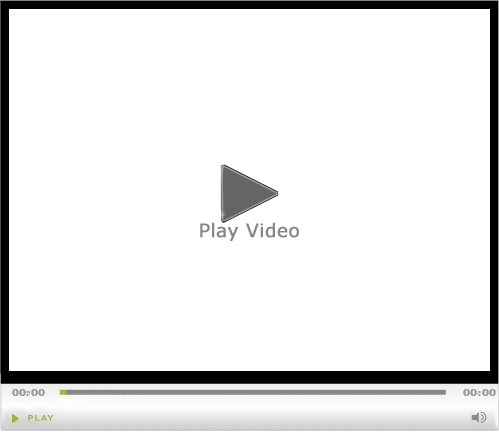Curt T-Connector Vehicle Wiring Harness with 4-Pole Flat Trailer Connector

 Arrives before Christmas
Arrives before Christmas 

2014 Keystone Springdale Travel Trailer
Will this fit?
To see if this custom-fit item will work for you please tell us what vehicle you'll use it with.
Thank you! Your comment has been submitted successfully. You should be able to view your question/comment here within a few days.
Error submitting comment. Please try again momentarily.
- All Info
- Reviews (6)
- Q & A (0)
- Videos (3)
- Photos
CURT Custom Fit Vehicle Wiring - C43CR
- 4 Flat
- No Tow Package
- Trailer Hitch Wiring
- Vehicle End Connector
- Plug-In
- CURT
- Plug and Lead
- Converter
- Hidden
Quickly and easily install a 4-way trailer connector on your vehicle with this custom harness. T-connector plugs directly into existing wiring. Powered converter reduces strain on wiring system and is made using SMT to ensure superior performance.
Features:
- Provides a 4-way flat trailer connector at the back of your vehicle to power your trailer's signal lights
- Compatible with 5-pole, 6-pole and 7-pole adapters (sold separately)
- Connects quickly and easily
- Locate connection points behind rear access panels
- Plug in T-connector
- Run hot lead to car battery
- Includes a tail light converter to ensure that your vehicle's wiring matches that of your trailer
- Powered module connects directly to battery to avoid overloading vehicle's electrical system
- Constructed using surface-mount technology (SMT) for consistent, reliable performance
- Maximizes trailer light yield and intensity while producing minimal heat
- Ensures superior operation in rough road conditions
- Comes with dust cap for 4-way flat connector
Specs:
- Maximum amperage:
- Stop/turn lights: 5 amps per circuit
- Tail lights: 7.5 amps per circuit
- Limited 1-year warranty
Installation
This custom-fit T-connector plugs into your vehicle's wiring harness, which is located behind the driver's-side and passenger's-side rear access panels. You will have to remove the skid plate and side panel pockets to access this harness. Once you've plugged in the T-connector, run the hot lead up to your car battery. Connect the lead to the included fuse holder, and then connect the fuse holder to the positive terminal on your battery.
Once installation is complete, the 4-way connector will be stowed in an out-of-the-way within your rear cargo area.
It is recommended that you use a small amount of grease on all electrical connections - the plugs on your automobile and the 4-pole connector itself - to help prevent corrosion.
Powered Tail Light Converter with Surface-Mount Technology
A tail light converter is built into this T-connector. This converter is a circuit-protected, battery-powered unit that bypasses the electrical routes that are used by a basic wiring harness. As a result, there is virtually no draw on your tail light circuits.
Because most trailers run on a two-wire system - wherein the brake and turn signals are carried on one wire - the separate brake and turn signals from your vehicle's three-wire system need to be combined so they are compatible with the wiring system of the trailer. This converter combines the brake and turn signal functions of your automobile so that they run on one wire to properly activate your trailer's tail lights. Note: This will not affect how the tail lights on your vehicle operate.
Curt builds each tail light converter using surface-mount technology (SMT). This method of construction involves soldering electronic components directly to the surface of a printed circuit board. SMT eliminates the need for leads, which are used in older through-hole technology. The result is a circuit board that is smaller yet provides more routing area and that offers superior performance, reliability and durability.

Circuit boards constructed using SMT have been shown to perform better under rough conditions with excessive vibration than those made using the through-hole method. And where would vibration be more likely to occur than in towing applications? Curt converters also produce less heat, leading to increased durability and longer life. In addition, lower levels of resistance ensure better performance, especially for parts that operate at higher frequencies.
Each Curt circuit board is made using high-quality components that are pieced together in the most technologically savvy fashion, leading to greater predictability and reliability in functioning.
56453 CURT T-Connector - Surface Mount Technology - 4 Wire
Installation DetailsThis Product Fits The Following Vehicles
- 2020 - 2027 Lincoln Aviator
- 2020 - 2027 Lincoln Aviator
California residents: click here


Videos are provided as a guide only. Refer to manufacturer installation instructions and specs for complete information.
Video Transcript for Checking Out the Curt T-Connector Vehicle Wiring Harness with 4-Pole Flat Trailer Connector-C43CR
Ellen: Hey everybody. I'm Ellen here at etrailer.com. And we're going to be taking a quick look at the Curt T-Connector Vehicle Wiring Harness.One of the things you might be wondering with getting a vehicle wiring harness is how hard is this going to be to install Well, this is a custom fit for the 2020 through the current year model of the Lincoln Aviator. So that being said, most of these installs are pretty straightforward. Really the trickiest part is just getting access to the back of your taillights to plug in the wiring here. That can sometimes be a little bit kind of just tricky just to get in there.
For the Aviator you do have to pull a panel off in the rear of the vehicle. Just requires some basic tools, a seven millimeter socket and a trim panel tool to get access in there, maybe a flat blade screwdriver.So it does take a little bit of work, but it's really not that bad. It's definitely something that you can do at home, in your garage, in your driveway. Might take an hour or two to get done. And besides getting access to the back of those taillights, the other hard part is running the power wire.
This needs to go from the box to your battery, which is on the passenger side for the Lincoln. So you just want to wrap that somewhere along, usually the bottom of your vehicle. Easiest thing to do is just follow your brake lines, tie it off with some of the included zip ties. You might need some extra, you can never have too many. And make sure that it's grounded out or anchored out in several spots.
Take it out slack, follow along with those brake lines, it's the safest route to go. Otherwise, avoid anything hot like your exhaust, anything moving like your suspension.And then you also are going to put a fuse in between the bulk wire and your positive side of the battery. So all in all, not too bad, as far as getting this installed. As far as the wiring itself, it doesn't impede the functioning of your vehicles lights overall. Doesn't change anything about how you drive.
Once it's installed you really won't know that it's there. You might have some wiring hanging off the back of your vehicle. Some people don't like that. Because usually you just route this through the back hatch of your vehicle and just use it as needed and then fold it up inside the vehicle when you're not using it.If you want to have a more permanent install or kind of a cleaner look, you can get some brackets to attach to your hitch. And then mount this more permanently. Does require a little bit more work, a few more parts, but just kind of up to you on what kind of look you're going for. If you don't really care how it looks just as long as it works, you can route it out the back door. And there's really no problem with that. It's a nice flat wire. It goes right through the weatherstripping or lays right on top of the weatherstripping. It doesn't let any water or anything into your vehicle. And it doesn't damage the wire at all. Just as long as you stay away from the door striker. That's pretty much the only thing to be aware of with that.As far as the box or how this wiring functions, Curt makes a pretty good wiring. They've updated it now. So it's got this potting material in here to make sure that there's no issues with that. It keeps the wiring protected. So you don't have to worry about any kind of shorts or back feed or anything else. It also keeps any water or dirt from getting into this main component. This is kind of the brains of the operation for your wiring.Everything else that it comes with. You've got your two connectors, one that goes for the passenger side, one that goes to the driver's side. You have to make a ground connection power. We talked about that already. And then your four pole. It does come with a dust cap to go over that, to keep that protected as well. And then you'll get a hardware kit. So again, you get some zip ties. You'll also get the butt connectors necessary to make those connections between your wiring. And also the fuse to go in that fuse holder. And a double-sided piece of foam tape to mount up this box.If it we're me, I would maybe grab a couple of heat shrink butt connectors to replace those. Especially if you're making that wiring connection outside the vehicle, it's not required, but I just liked them better because they create a watertight seal. They just going to hold on a little bit better, and typically lasts a little bit longer. If you're going to be routing everything inside, which some people do prefer to do. Again more work, but you don't really need to go with the heat shrinks if you go that route. Again, if you use those wraps and electrical tape around them, it should do just fine. But that's just my two cents as far as that.As far as the tools required for this, again, we talked about flat blade screwdriver. I think this requires a seven millimeter socket. You might want to get an extension as well, just to get to some of those harder to reach areas, wire cutters, strippers and crimpers as well to make everything happen. So it shouldn't take too long, should be a good fit for you. And again, it does give you that four-pole at the back of your vehicle, which is what you're after.I hope this video has been helpful in deciding that this is the right wiring for you. We do have a lot of options available here at etrailer.com, along with a lot of other, those other parts and tools that I mentioned. So if you're missing anything, check us out, we should have you covered. And thanks for watching.
Customer Satisfaction Score:
98% were satisfied with this product
2% of customers were not satisfied
- Product did not meet expectations
Ratings & Reviews
4.3
6 reviews

As others have commented, I found the home run pos to batt cable short. For my Aviator though I routed it not under the car as recommended, but through the firewall at the battery, along the sills, over the RR wheel well and into the underfloor storage where the module goes-it was barely enough cable. Works fine

I trailer about once a month, just hauling “stuff” to and from the cabin up north. The wiring harness has worked perfectly so far. It needs to run outside through the bottom of the tailgate on the Aviator, from inside near the spare tie compartment, but no issues so far.
To start, this is not the first time I've installed a hitch on my car. First time in the early 80s. I love the plug and go function. My reason for 2 stars is not enough length on the power wire. Short by 2 feet. I wired like the video showed. Wire is cheap, add 4 feet of wire to the power lead.
No problems, quick arrival in 2 days. Solid transaction
See what our Experts say about this CURT Custom Fit Vehicle Wiring
- Best 4-Way Trailer Wiring Harness For 2024 Lincoln AviatorThe best 4-way trailer wiring harness for your 2024 Lincoln Aviator is from Curt, with the correct fit being the following part: - Curt T-Connector Vehicle Wiring Harness # C43CR The # C43CR is the best because Curt makes highly reliable trailer wiring harnesses that hold up the best over the long haul. This harness also has the highest amp ratings, so it gives your Aviator the best prevention against any potential shorts.
view full answer...
Info for this part was:








At etrailer.com we provide the best information available about the products we sell. We take the quality of our information seriously so that you can get the right part the first time. Let us know if anything is missing or if you have any questions.












































Joe
12/19/2024
It doesn’t get a lot of use, so this wiring harness has worked well. I keep it in the “trunk” area of the Lincoln when not in use. I suspect if I was using it daily, that closing the tailgate on the wiring harness would cause it to break, but for me, there’s no issue.